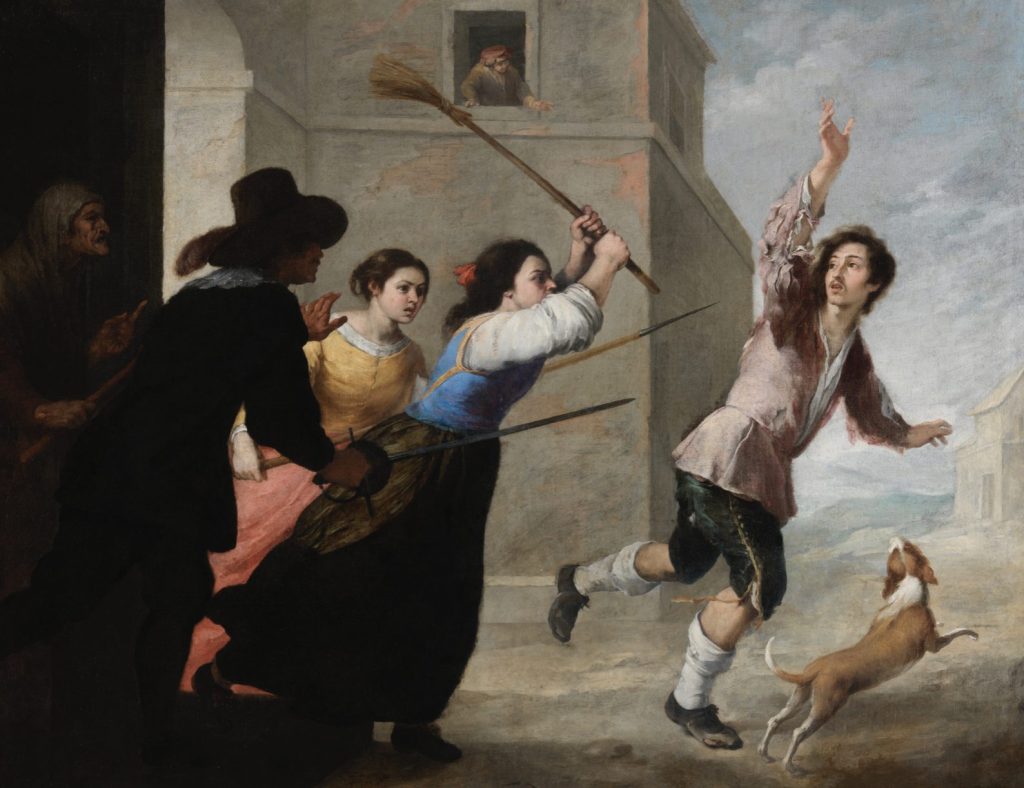
The Prodigal Son Driven Out (1660s), Bartolomé Esteban Murillo. National Gallery of Ireland. Presented, Sir Alfred and Lady Beit collection 1987.
Celebrated Baroque Spanish artist Bartolomé Esteban Murillo’s prodigal son paintings — a series of masterpieces rooted in the biblical parable — are heading to the Southern Methodist University campus’ Meadows Museum.
On loan from the National Gallery of Ireland February 20-June, the six grand canvases commissioned for churches and cathedrals in the mid-1600s will travel to the United States for the first time. And Meadows will be the only venue in the country where we can see the showcase entitled, Murillo: Picturing the Prodigal Son.
Meadows Museum Director ad interim and Curator Amanda W. Dotseth says it’s a “true privilege.”
“The Meadows Museum is home to the largest number of paintings by Murillo in the United States and is the ideal venue to introduce this series to American audiences,” she says. “We are very grateful to the National Gallery of Ireland and to the other lenders who made this extraordinary presentation possible.”
Although Murillo frequently painted religious subjects for his patrons in Seville, the prodigal son parable was somewhat unusual for the time, according to the museum’s press release. This exhibition therefore brings together a select group of 16th- and 17th-century images that take different approaches to the visualization of the story, related in Luke 15.
“While the episode near the end of the parable—the son’s return home to his forgiving father—is most widely recognized as the pivotal moment, Murillo expands the narrative into six parts focused on the son’s actions and their consequences before concluding with his return home,” explain Meadows’ experts in their literature on the exhibition. “The series demonstrates Murillo’s skill at staging and visualizing narrative; each painting’s composition is independently representative but also cues sequential reading and the collective experience of the series as a whole.”
Since the prodigal son story was not popular in Spain at the time, Murillo likely turned to foreign prints which would have been easily accessible to him in cosmopolitan, 17th-century Seville. The exhibit includes a number of etchings thought to be source material for the artist.
Etchings by Albrecht Dürer, Jacques Callot, and Pietro Testa included in the display will show work that may have influenced Murillo.
The catalogue is dedicated to Mark A. Roglán, the renowned late museum director who died of cancer earlier this year. He is remembered not only as one of the country’s most distinguished Spanish art scholars but also “the preeminent mover and shaker in collaborations between American and Spanish museums.” It will be the last publication for which he served as a co-editor.
“Murillo: Picturing the Prodigal Son and the accompanying catalogue are very much the result of Mark’s passion for sharing the art of Spain with the world,” said Linda P. Custard, SMU Trustee Emerita and Chair of the Meadows Museum Advisory Council. “Although Mark is not here to celebrate the opening of the exhibition with us, every visitor to the museum will be experiencing his vision and his legacy.”






